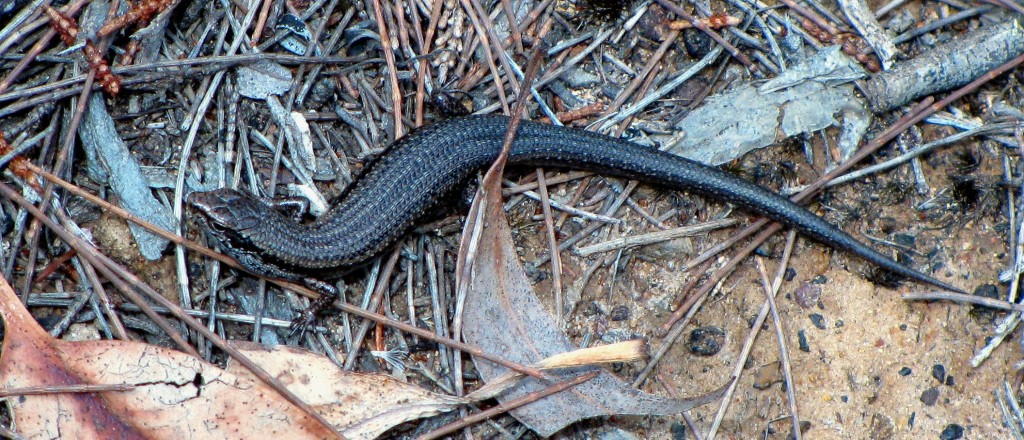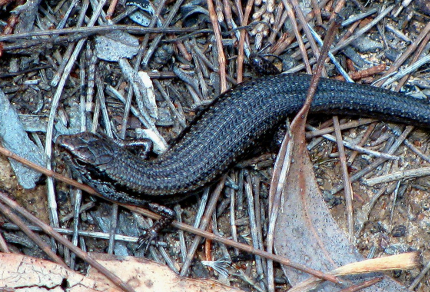Today, for the first time since our arrival in Australia, I attempted to maintain and generally succeeded in maintaining a comfortable temperature in our house without the use of air conditioning. I opened every window, allowing breezes to sweep through the house. This more or less did the trick on a partly cloudy day with intermittent drizzle and a mid-afternoon temperature of just under 30°C. That temperature was 10°C hotter than today’s top in Hobart, the capital of Tasmania, the city to which we’ll fly from Melbourne next Thursday.
But, first things first. Late on Friday, we’ll fly to Melbourne. On Saturday, we’ll visit one of Chris Johnson’s Ph.D. students, who will be in the field putting radio-transmitting collars on sheep guard dogs. Her study is aimed at determining how the presence of guard dogs dramatically decreases the predation on sheep by dingoes. Do the guard dogs fight with the dingoes, or is some other mechanism in place? Vilis is hoping to use some of her radio location data to analyze the sheep and guard dogs’ movement patterns.
On Sunday, we’ll explore around Melbourne, and on Monday and Tuesday, Vilis will attend an animal movement patterns conference while I identify Melbourne birds in various botanical gardens and check out art galleries and the museum. After another day of mucking about in and around Melbourne on Wednesday, it’s off to Tassie for eight days of exploring.
I made lists of items to pack and items to buy. I placed tent, sleeping bags, insulating mats, compasses, backpacks, and other supplies in the spare bedroom. I perused a road map of Tasmania, consulted The Rough Guide to Tasmania written by James Stewart and Margo Daly,1 and devised a plan of action. It includes swimming in clear water at white powder beaches, bushwalking to great views of coastal cliffs and alpine lakes, checking out Hobart’s waterfront and Salamanca Market, and looking for Tasmanian devils and wombats in Narawntapu National Park, the supposed ‘Serengeti of Tasmania.’2 Those plans are, of course, weather-dependent, and Tassie’s weather is notoriously unpredictable.3 Temperatures will, however be cooler than in Townsville, which will provide a welcome change; they may, however, transform the swimming to wading or simply beach-walking.

Metallic Skink, Tasman National Park, Tasmania (© Magi Nams)
I’ll take my bird and mammal guides, but will leave the reptile guide behind, since only 21 of Australia’s 864 species of reptiles occur in Tasmania – 17 skinks (of course), 1 dragon, and 3 snakes, 2 of which are dangerously venomous (of course).4,5 No crocs, no turtles, no geckos, no goannas. If I see a reptile, I’ll make notes and have a shot at identifying it when we return. If I see a snake, I’ll know there’s an almost 70% chance it could give me a nasty, painful, and potentially life-threatening bite. The relatively harmless (weak venom) species is the white-lipped snake, which has a pale band across its neck and a very noticeable white stripe through its upper lip. Any snake that doesn’t have that white stripe could mean trouble. When I mentioned to Vilis the paucity of reptiles on the island state, his comment was a laconic, “Too cold and too isolated.”
After months of sultry heat in a tropical city, that sounded really inviting.
References:
1. James Stewart and Margo Daly. The Rough Guide to Tasmania. 2008. Rough Guides, New York. 391 p.; 2. Ibid, p. 261; 3. Ibid, p. 10.
4. Department of Primary Industries, Parks, Water and Environment. Native Plants & Animals: About Tasmanian Reptiles. Updated 18-Jun-2009. Accessed 10-Mar-2010. http://dpiw.tas.gov.au/inter.nsf/WebPages/BHAN-54UVX3?open
5. Steve Wilson and Gerry Swan. A Complete Guide to Reptiles of Australia, 2nd edition. 2008. New Holland Publishers (Australia) Pty Ltd, Sydney. p. 16.


